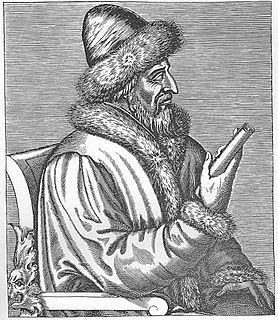
Vladimir-Suzdal, also Vladimir-Suzdalian Rus' formally known as the Grand Duchy of Vladimir (1157–1331), was one of the major principalities that succeeded Kievan Rus' in the late 12th century, centered in Vladimir-on-Klyazma. With time the principality grew into a grand duchy divided into several smaller principalities. After being conquered by the Mongol Empire, the principality became a self-governed state headed by its own nobility. A governorship of principality, however, was prescribed by a Khan declaration (jarlig) issued from the Golden Horde to a noble family of any of smaller principalities.
The Belsky or Belski family was a princely family of Gediminid origin in the Grand Duchy of Lithuania. It later deflected to the Grand Duchy of Moscow and played a key role during the regency of Ivan IV of Russia. The family started with Ivan Vladimirovich, son of Vladimir Olgerdovich and grandson of Algirdas, and ended with Ivan Dmitrievich Belsky in 1571. The Belsky name was derived from their principal possession of Bely, Tver Oblast.
Buturlin was a Russian noble family. Notable members of the family include:
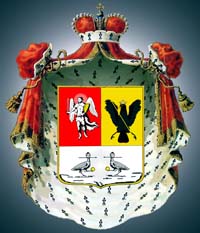
Repnin, the name of an old Russian princely family of Rurikid stock. The family traces its name to Prince Ivan Mikhailovich Obolensky (+1523), nicknamed Repnya, i.e., "bad porridge". Like other Princes Obolensky, he descended from Mikhail Vsevolodovich, prince of Chernigov, who, in 1246, was assassinated by the Mongols.
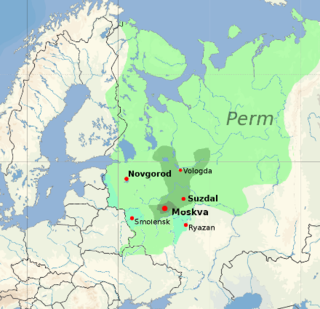
The Grand Duchy of Moscow, Muscovite Rus' or Grand Principality of Moscow was a Rus' principality of the Late Middle Ages centered around Moscow, and the predecessor state of the Tsardom of Russia in the early modern period.
The Glinski rebellion was a revolt in 1508 in the Grand Duchy of Lithuania by a group of aristocrats led by Prince Mikhail Glinski in 1508. It grew out of a rivalry between two factions of the nobility during the final years of Grand Duke Alexander Jagiellon. The revolt began when Sigismund I, the new Grand Duke, decided to strip Glinski of his posts based on rumors spread by Jan Zabrzeziński, Glinski's personal enemy. After failing to settle the dispute at the royal court, Glinski and his supporters rose up in arms. The rebels swore allegiance to Vasili III of Russia, who was waging war against Lithuania.
The Kobuzev family is an ancient Russian noble family descended from boyar scions. The Kobuzev family was listed in the part 6 of the genealogical book of Ryazan, and the parts 2 of the genealogical books of Tver, Saratov and Tambov.
Boyar scions were a rank of Russian gentry that existed from the late 1300s through the 1600s. In the late 1700s—early 1800s descendants of the boyar scions who failed to prove nobility or regain it through the Table of Ranks were enrolled within the social group named odnodvortsy.
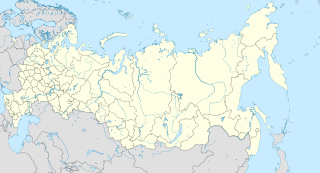
Odoyev is an urban settlement since 1959, in the west of Tula Oblast, Russia, the administrative center of Odoyevsky District. It sits on the left bank of the Upa river, a right-hand tributary of the Oka river, 75 km away from Tula. Odoyev had the status of town prior to 1926.
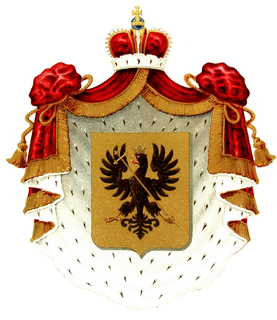
The House of Odoyev was a princely Rurikid family descended from the sovereign Princes / Dukes of Odoyev and Novosil. Their ancestors were the Upper Oka sovereigns who ruled the tiny Principality of Odoyev until 1494. In the following decade the family was absorbed into the ranks of Muscovite boyars. The Odoyevsky family died out in the mid-19th century. The family was listed in the 5th part of the dvoryanstvo registers of the Moscow and Vladimir regions.
Grand Duke Ivan IV of Ryazan was the ruler of the Grand Duchy of Ryazan (1483–1500). He was the elder son of Grand Duke Vasily Ivanovich of Ryazan and Grand Duchess of Ryazan Anna Vasilyevna, younger sister of Ivan III of Moscow. He had a younger brother, Prince Fyodor Vasilyevich, with whom he shared domains in the Duchy of Ryazan.
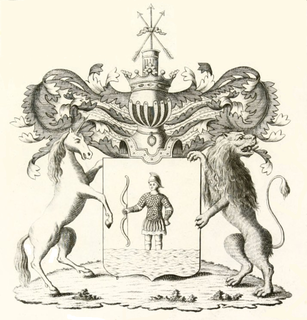
The Birkin family is a Russian noble family originating with Ryazanian boyar scions. The Birkins were listed in the Velvet Book and the Part 6 of the Ryazanian genealogical book.
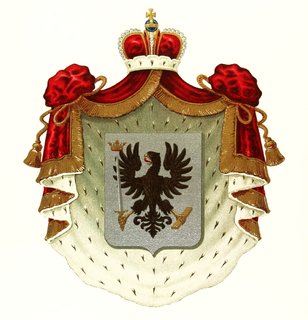
The Lyapunov family is a Russian noble family claiming descent from the Galich Rurikids, who lost their princely title in the 15th century. The family later served the archbishop of Veliky Novgorod, and subsequently integrated into the Ryazanian nobility.
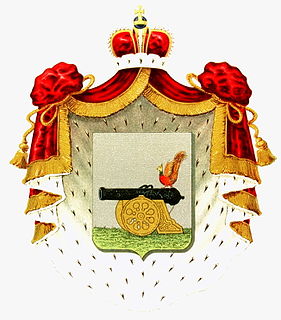
The Rzhevsky family is a Russian noble family descended from Smolensk Rurikids.

The Tatischevs is a Russian noble family traditionally believed to be descended from the Princes of Solomerech of the Smolensk Rurikids. This version of the Tatischev family's genealogy had made it to the Velvet Book. A cadet branch of the family bears the title of counts. The Tatischevs are listed in the Parts 5 and 6 of the genealogical books of Moscow, Tver, Tula, Kostroma, Penza and Saint-Petersburg governorates. From the four lineages of the family, the cadet one was granted the title of counts in 1801.
Miloslavsky family was a Russian noble family. The Miloslavskys are mostly known for Maria Miloskavskaya who married Tsar Alexey Romanov.

Princes Kropotkin is an ancient Russian noble family of Rurik stock descending from Prince Dmitry Vasilyevich nicknamed Kropotka, a nephew of the last Grand Duke of Smolensk, Yuri Svyatoslavich. Princes Kropotkin are listed in the 5th part of the Kazan, Kaluga, Mogilyov, Moscow, Ryazan, Saint-Petersburg and Tula genealogical books and 2nd part of the Moscow genealogical book.

Verderevsky is a Russian noble family from prominent boyars of the Duchy of Ryazan. The Verderevskys are listed in the 6th part of the Ryazanian genealogical book. The Verderevskys were the largest landlords in the Duchy of Ryazan: in the 16th-17th centuries they owned at least 30 allods and about 40 fiefs. Today, descendants of the family live in Russia, Canada and France.





